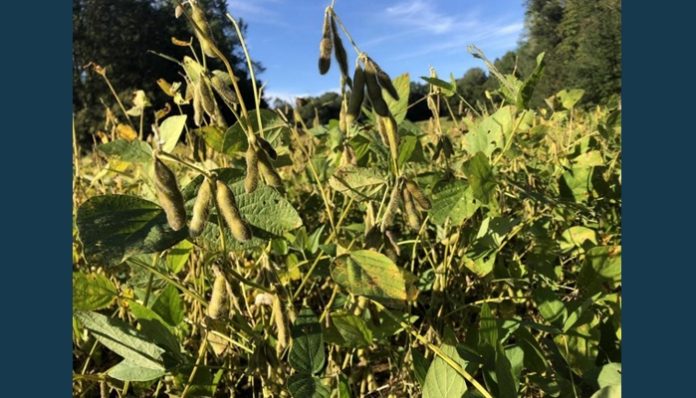
EVANSVILLE, Ind., April 26 (UPI) — The U.S. Department of Agriculture has paid farmers $8.39 billion of the estimated $9.56 billion it promised in December to offset China trade war losses, the agency said. But no similar aid is budgeted for this year.
The lion’s share of the Market Facilitation Program payments went to soybean growers, who were most severely impacted by China’s retaliatory tariffs — followed by corn, wheat, cotton and sorghum.
“It was a huge boost,” said James Mintert, the director of the Center for Commercial Agriculture at Purdue University. “For a lot of farms in 2018, the Market Facilitation Program payments were the difference between making money and losing money.”
In fact, the aid enabled some growers to do quite well in 2018, Mintert said. This was especially the case in Indiana and other states in the eastern part of the Midwest.
After China imposed a 25 percent tariffs on American soy last summer, soybean prices in those areas fell substantially.
But the impact was not as severe as states farther west because most of Indiana’s supply either stays in the United States or is shipped to other alternate trading partners. That meant that many growers in those areas were able to sell their harvest and collect the aid.
Growers in the Great Plain states, by contrast, were hit much harder. Direct rail access from those states to ports in the Pacific Northwest — from which barges regularly sail to Asia — means most of the beans from that area are designated for China. In states like North and South Dakota, not only did prices plummet, but many farmers also could not find anyone to buy their beans.
“Soybeans from South Dakota typically go to the Pacific Northwest,” said Jerry Schmitz, a farmer and the executive director of the South Dakota Soybean Association. “And there was a period there after harvest when that stopped — like 100 percent stopped.”
Though there have been sporadic soybean purchases made by China since fall harvest, the country has still imported substantially fewer beans this year.
Farmers in South Dakota have 130 percent more soybeans stored on their farms than normal, Schmitz said. And the window to sell those beans is shrinking fast.
“Young farmers and anybody with debt probably had a difficult time breaking even,” Schmitz said.
The USDA has said that it will not offer aid again this year, even if the trade dispute has not been resolved.
Because the agricultural tariffs were imposed after farmers had planted in 2018, they were helpless to adjust. This year, farmers are expected to plan accordingly. And this means farmers easily could incur heavier losses in 2019 than 2018, Mintert said.
“We had strong yields in 2018, plus the Market Facilitation Program,” Mintert said. “In Indiana, 2018 was a better year than 2017 for those reasons. But 2019, if yields go back to normal and we don’t have the Market Facilitation Program and the trade dispute is not resolved, it could be a substantially worse year.”





